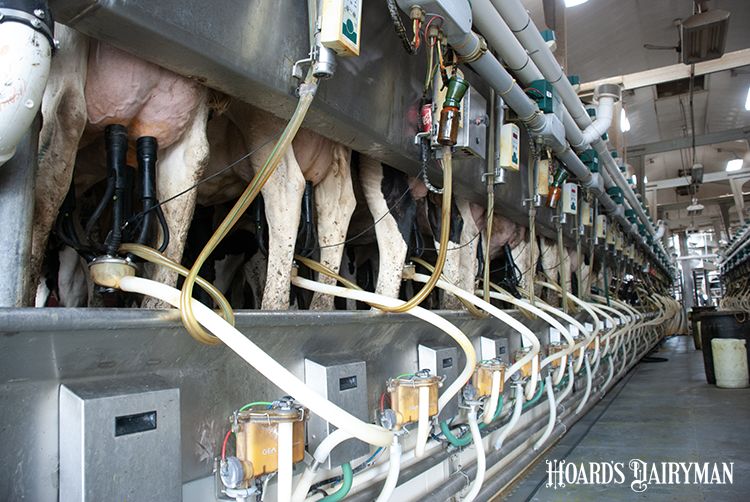
No case of mastitis is good, but some causes of infection are easier to control than others. Unfortunately, one particularly difficult type of mastitis is affecting a growing number of dairy herds.
“Prototheca mastitis is an emerging problem in dairy cattle globally,” said veterinarian Don Sockett during a recent University of Wisconsin Division of Extension Badger Dairy Insight webinar. “We are seeing a lot more of it than we had in the past,” he noted, refencing the number of newly infected herds that are identified by samples sent to the Wisconsin Veterinary Diagnostic Laboratory where he works as a microbiologist.
Some aspects of Prototheca mastitis remain a mystery to us. “There’s a lot we don’t know, and a lot we need to know,” Sockett stated. What we do know is that the mastitis-causing agent called Prototheca bovis is an algae, which makes it different than most of our common mastitis pathogens that are bacterial.
Sockett said it is also a prolific biofilm producer, and organisms that produce biofilms are protected against weapons such as chemicals and antimicrobials. Once established and producing biofilm, he said there is not much that can be done to control it.
How cows are becoming infected with Prototheca bovis remains somewhat a mystery. While it appears Prototheca mastitis can be both contagious and environmental in nature, Sockett said the sources of intramammary infections are still speculative.
If Prototheca mastitis is a problem on a farm, the pathogen is typically found in abundance in environment, in places such as water troughs, bovine feces, mud, and occasionally feed. It has also been detected in milking equipment, pipelines, and teat dippers.
Sockett said it is difficult to identify when cows are getting infected because Prototheca bovis does not stimulate an innate immune response. It takes time for the cow to respond to the infection in the udder, and depending on the animal, it can take weeks to months before infection is present.
“If we have no idea when it first entered mammary gland, it makes trouble shooting extremely hard because you can’t find a point source,” Sockett said.
Another challenge, according to Socket, is that there isn’t research available to tell us what counter agents to use to help stop the spread of this mastitis. In addition, Prototheca bovis requires a specialized culture media because it is slow growing, so an on-farm culture system cannot be used to rule it out, Sockett explained. Samples should be sent to a diagnostic laboratory if a Prototheca infection is suspected.
One sign that Prototheca mastitis has entered the herd is a slow, persistent elevation in somatic cell count among the lactating cows for no apparent reason, Sockett said. If cow cleanliness and comfort, milking procedure, and milking equipment are all maintained, and other common pathogens have been ruled out, Prototheca may be lurking.
If caught early, Sockett said it can be eradicated in a matter of months. Once present at higher levels, the fight becomes much more difficult. “You have to find it early and get on it before it gets established in the herd,” he advised.








